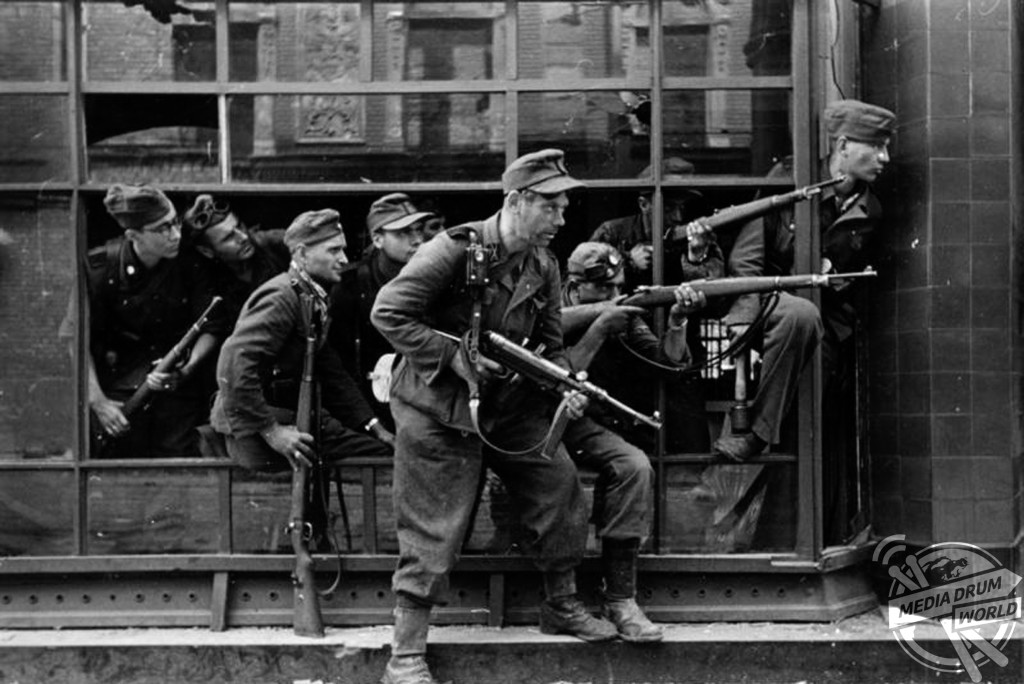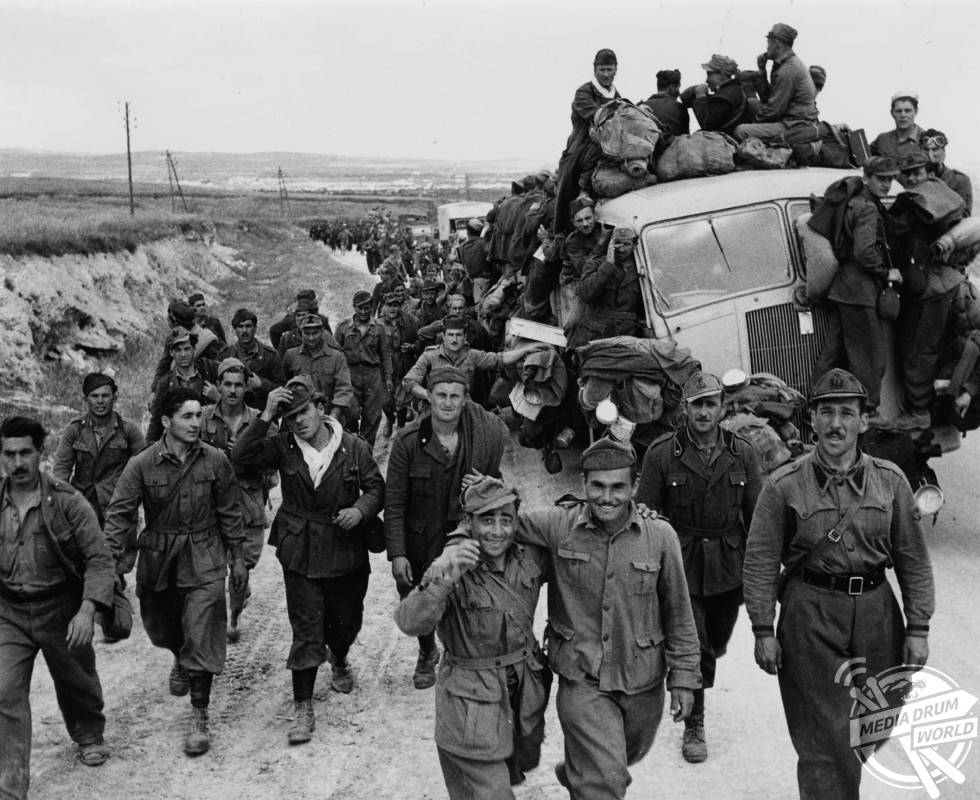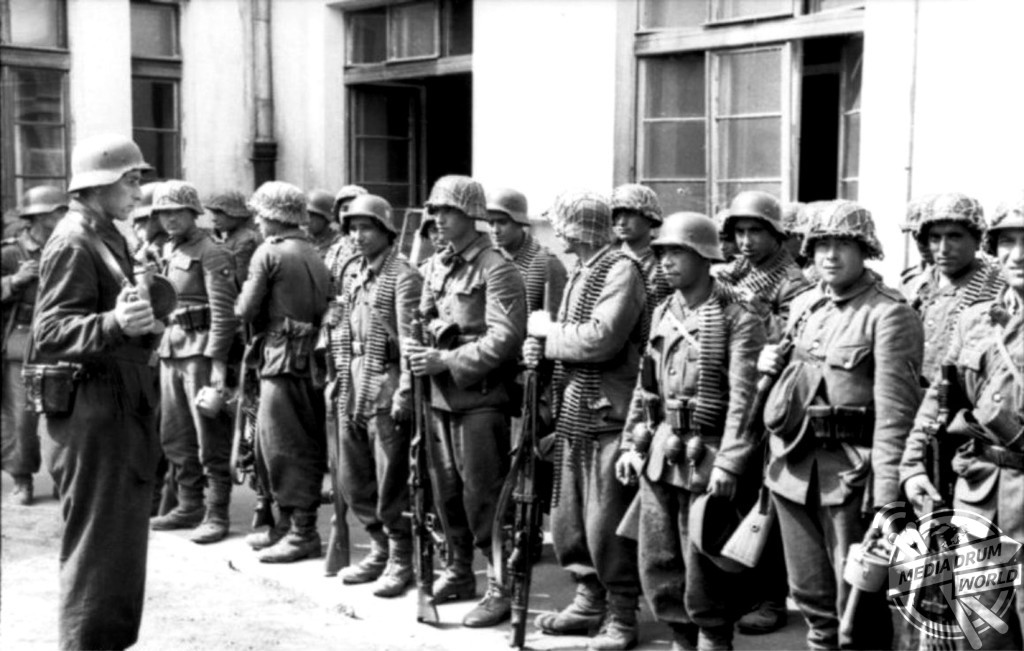
By Tom Dare
DISTURBING IMAGES of the imprisoned criminals enlisted by Hitler to serve in his ‘penal battalions’ during the Second World War have been published as part of a new book much like the Allies were portrayed as doing in the classic war movie The Dirty Dozen.
Images from ‘Strafbattalion: Hitler’s Penal Battalions’ by author Walter S. Zapotoczny show soldiers from the Nazis’ Penal Battalions in the thick of the action, using tanks to launch an assault on the enemies in one picture and priming a mortar in another.

Further, far darker images from the collection show the heavily armed troops shortly after capturing prisoners on one of their daring missions, while the most disturbing shot from the collection shows three troops holding guns to the backs of the heads of three Soviet partisan prisoners, before executing all three.
Hitler’s original intention before the outbreak of war had been to simply reform those who were unable to serve their conscription, with the focus on changing attitudes toward Germany and the Reich at the forefront of priorities. However, when war was declared in 1939 he soon realised that he would need as many men as possible for the upcoming battles, and so the Strafbattalions were formed.

Rarely was an entire battalion of soldiers made up purely of convicts, and more often than not soldiers from the Strafbattalions were used to supplement already existing units. They were offered the opportunity to work off their prison sentences by serving in the armed forces, where they were often given the most difficult tasks available, including suicide missions.
Clearing minefields, carrying out hard labour and serving in the front line of any attack were often tasks asked of the convict-soldiers. If the convicts showed their worth during their service their sentence could be overturned, allowing them to re-join the armed forces with the full rights of a combat soldier.

In the book author Walter S. Zapotoczny, who has written a string of books on the Second World War, examines the penal units, their combat history and order of battle.
And he says that the policy had varied levels of success during the war.

“Condemned to prison sentences, the men who became members of Hitler’s penal battalions had an opportunity to have their sentences reduced by service at the front. Not only were these soldiers considered criminals, but their families were also tainted by the men’s actions and words.

“For many, the dangerous combat missions were better than the horrific conditions they faced in the military prisons. While gathering material for this book, I realized that the story of the Strafbattalions had to be told within the larger context of the German penal system and the increasing need for manpower, as World War II progressed. Soldiers were transferred from penal custody to parole and pardon combat units that were used to supplement regular military units. While many records of the penal units did not survive the war, the military organization of the Third Reich and the German Army groups give us an idea of larger organizations that the Strafbattalions became part of.

“Many soldiers took advantage of the opportunity to repent for their crimes and served on the front heroically. Others could not and continued criminal activities, committing atrocities on innocent civilians. While others were transferred back to prisons or executed for their crimes. This book is the story of the men who were caught up in ideas of National Socialism and became the pawns of its policies.”
Strafbattalion: Hitler’s Penal Battalions by author Walter S. Zapotoczny is published by Fonthill Media, and can be purchased here: https://www.amazon.co.uk/Strafbattalion-Battalions-Walter-S-Zapotoczny/dp/1781556474






